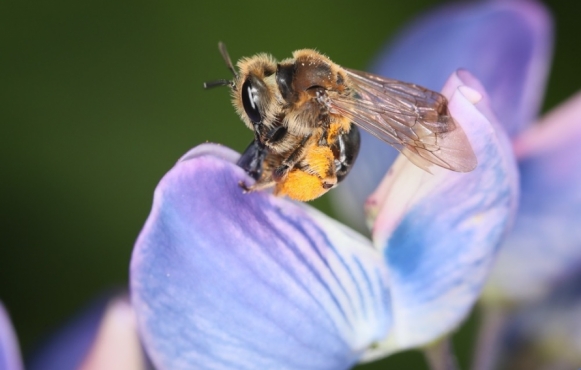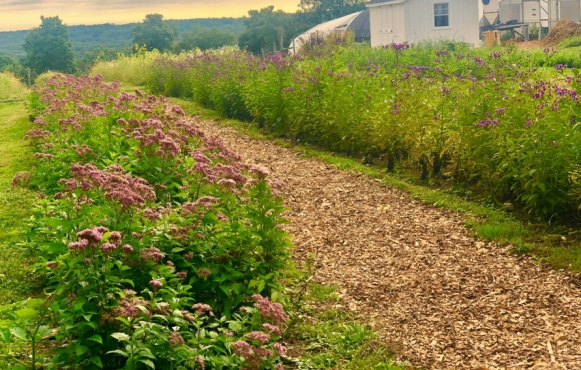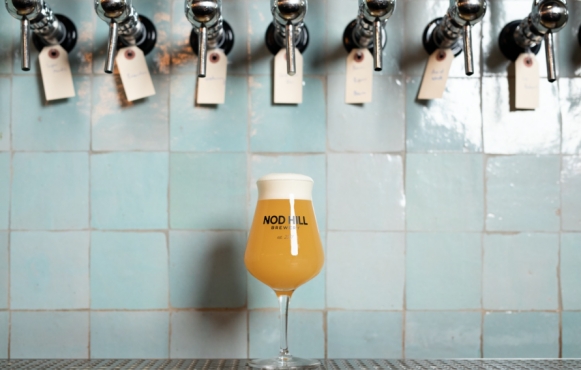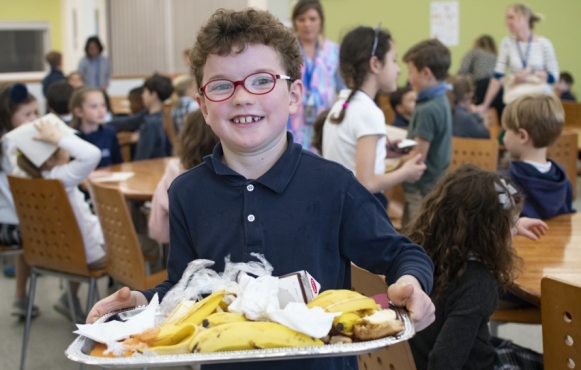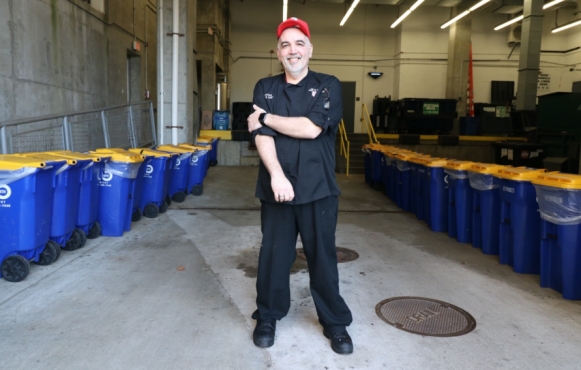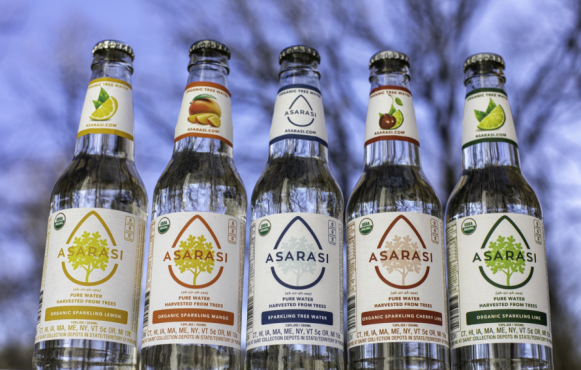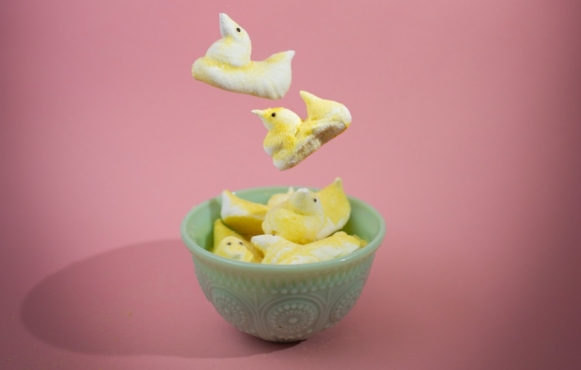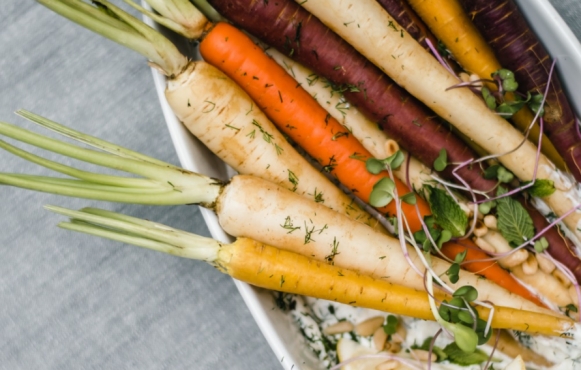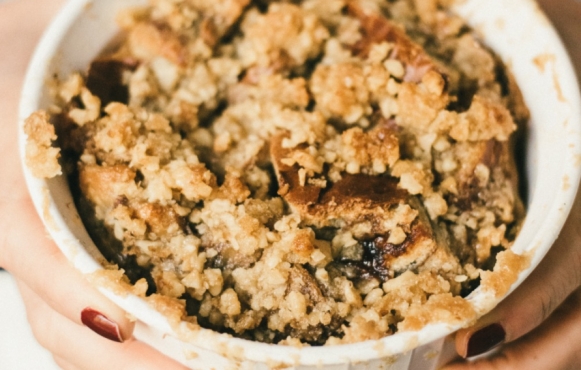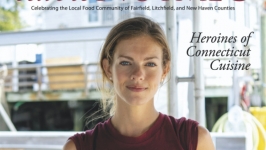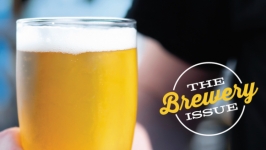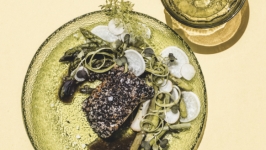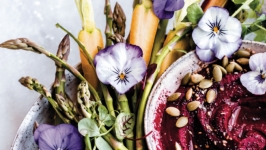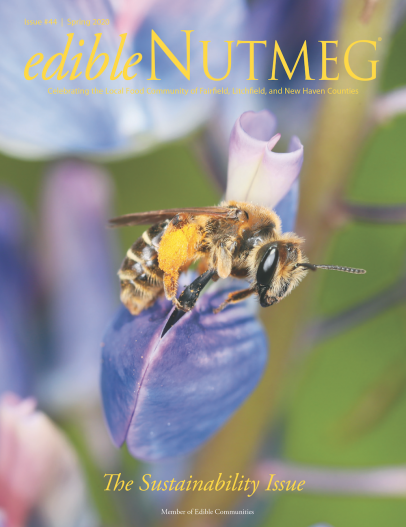
Since launching in 2006, edible Nutmeg has always been focused on matters of sustainability within Connecticut’s food systems. Yet, in a world awash with grim tidings about the state of the environment, it feels appropriate to formally dedicate this spring issue to the topic. In it, we are pleased to present some of the incredible work that members of our community are doing in support of environmental sustainability, and I hope that these stories will inspire you to take part in their endeavors.
Among our features in this issue are a pair illuminating the ways in which Connecticut schools at all levels are confronting an issue with significant environmental and social ramifications: food waste. We also look to our entrepreneurial citizens, highlighting businesses that are providing products and services that do service to protecting our environment. Additionally, our lead feature speaks to the very heart of our state’s food system: the wild, pollinating insects that are integral to the fruits and vegetables Connecticut produces, and how the Pollinator Pathway project strives to protect them.
One of the beneficiaries of the Pollinator Pathway project is on our cover, and you would be forgiven for mistaking the busy fellow for a honeybee. Although similar in appearance, it is actually Wilke’s mining bee (Andrena wilkella), a wild resident of the northeast United States who subsists on the nectar of plants both cultivated and wild, and who in turn spreads their pollen from plant to plant (as seen collected on its hind legs), ensuring the plants’ survival by facilitating sexual reproduction. This ancient cycle is far older than humanity, and we have relied on it since our earliest days as an agricultural society; despite the dedicated labors of our domesticated (and imported) honeybee, our fields could not flourish without the aid of a throng of wild, pollinating insects, including Wilke’s mining bee.
And yet, as our dominion over the land grows – our cities spreading into ever greater suburbia – we are eliminating from the landscape the very plants that feed our wild, pollinating benefactors, who help nurture the crops that sustain us. The Pollinator Pathway is a powerful movement that is taking hold to halt the diminishment of wild pollinators in Connecticut, and I hope you’ll become a part of it.
Your participation is critical in what is, and must be, a movement – a process undertaken by everyday people like you and me. Although city and town governments can be of great aid, the problem of declining wild pollinator species is not one that can be solved by government, alone. The majority of land in the United States is privately owned. This is profoundly true in Connecticut, where a 1991 study from the U.S. Bureau of the Census found that privately held land constitutes a whopping 93.8% of Connecticut’s acreage. Regardless of government policy, the remaining 6% of land is simply too small to be managed in a way that would preserve pollinator species. In other words, this one’s on us, and not just in the realm of our endangered pollinators. In all things sustainable, the most potent force of change is you. No matter how inconsequential any of us may feel, small changes, taken en masse, will reverberate powerfully through our communities, be it by keeping food waste out of landfills or sowing native plants in your garden to feed wild pollinators. For the butterfly or bumblebee who is nourished by your effort, your action will be anything but inconsequential; in fact, it will be both vital and indispensable.
Dana Jackson, Editor & Publisher
Spring 2020 Digital Edition Flipbook



